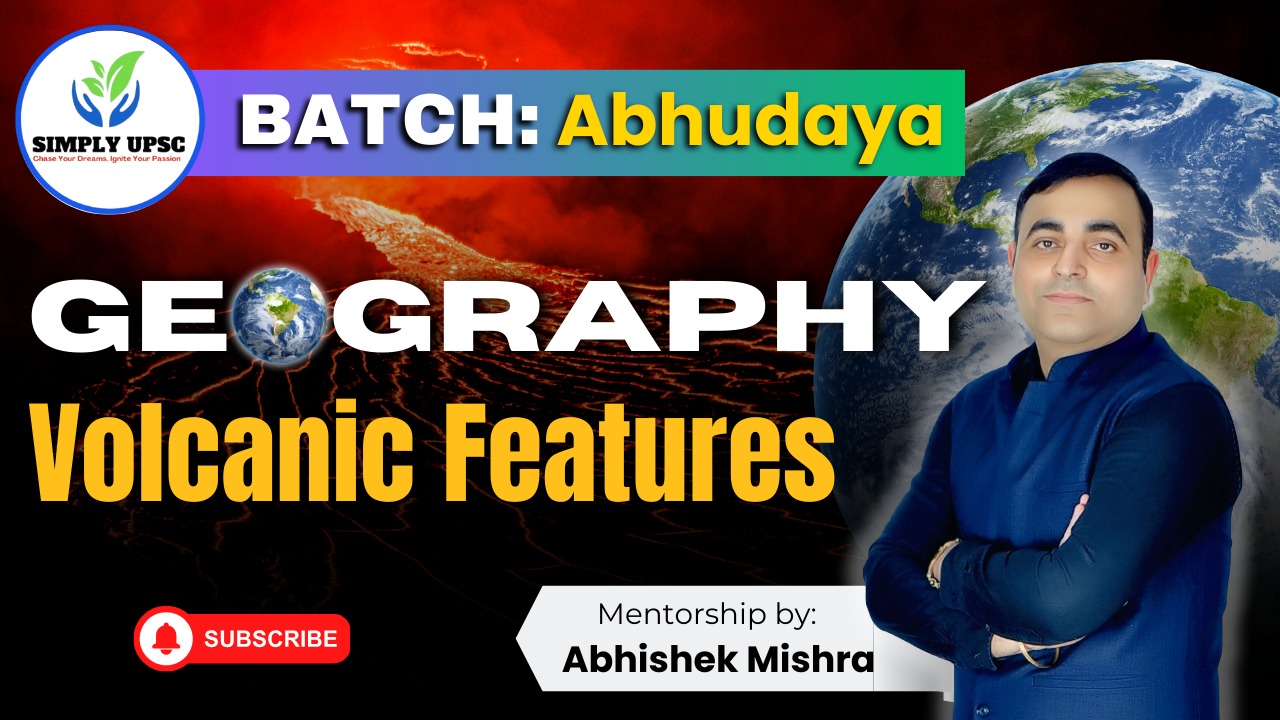
UPSC Geography
🎉 Master Volcanic Structures for UPSC! Learn about the formation, types, and global impact of volcanoes — essential for UPSC Geography Optional and GS Mains preparation. This knowledge will help you answer related questions accurately and confidently.
Understanding Volcanic Structure – A Guide for UPSC Aspirants
Volcanic structures are essential components of the Earth's geological system. They provide critical insights into the Earth's internal processes, including tectonic movements and the formation of landforms. For UPSC aspirants, understanding volcanic features is crucial for Geography Optional and General Studies (GS) Mains, as questions on physical geography frequently cover topics related to volcanic activity.
This comprehensive guide explores the formation, types, components, and global distribution of volcanoes, helping you build a solid foundation for UPSC preparation.
A volcano is an opening in the Earth's crust through which molten rock (magma), volcanic ash, and gases escape. When magma reaches the surface, it is called lava. The accumulation of lava, ash, and rock fragments creates volcanic structures over time.
Volcanoes are primarily formed due to the movement of tectonic plates. The major types of plate boundaries where volcanic activity occurs are:
| Component | Description |
|---|---|
| Magma Chamber | Large underground pool of molten rock beneath the volcano |
| Vent | The opening through which magma and volcanic gases reach the surface |
| Crater | Bowl-shaped depression at the summit of a volcano |
| Lava Flow | Stream of molten rock flowing from a volcanic eruption |
| Ash Cloud | Cloud of fine particles ejected into the atmosphere during an eruption |
| Cone | Accumulated layers of solidified lava and volcanic debris |
| Type | Description | Example |
|---|---|---|
| Hawaiian | Gentle eruption of basaltic lava | Kilauea, Hawaii |
| Strombolian | Moderate explosions with lava fountains | Stromboli, Italy |
| Vulcanian | Short, violent eruptions of ash and rock | Sakurajima, Japan |
| Plinian | Intense eruption with ash columns reaching stratosphere | Mount Vesuvius, Italy |
✅ Creation of fertile soil due to mineral-rich volcanic ash
✅ Formation of new landmasses (e.g., Hawaiian Islands)
✅ Source of geothermal energy
❌ Loss of life and property due to eruptions
❌ Air pollution and respiratory issues from ash and gases
❌ Disruption of global weather patterns
| Monitoring Technique | Purpose |
|---|---|
| Seismographs | Detect earthquakes and volcanic tremors |
| Gas Emissions Analysis | Monitor changes in volcanic gases |
| Thermal Imaging | Detect heat changes in volcanic areas |
| Satellite Observation | Track ash plumes and ground deformation |
| Volcano | Location | Type |
|---|---|---|
| Barren Island | Andaman and Nicobar Islands | Active |
| Narcondam | Andaman and Nicobar Islands | Dormant |
| Deccan Traps | Maharashtra | Extinct |
Understanding volcanic features is critical for tackling physical geography questions in UPSC exams. It also helps in answering questions related to:
11-Jul-2025 02:29 PM
Explore the fascinating structure, origin, and dynamics of our Earth—from...
11-Jul-2025 02:18 PM
Understand the vital role of lysosomes and cellular transmission in...
11-Jul-2025 01:48 PM
A concise and exam-focused overview of Plasmolysis and Protoplasm, covering...
04-Jul-2025 12:46 PM
India’s education system is undergoing a major transformation to prepare...
02-Jul-2025 02:51 PM
Recent research suggests that the transfer of genes between fungi...
Leave a Comment